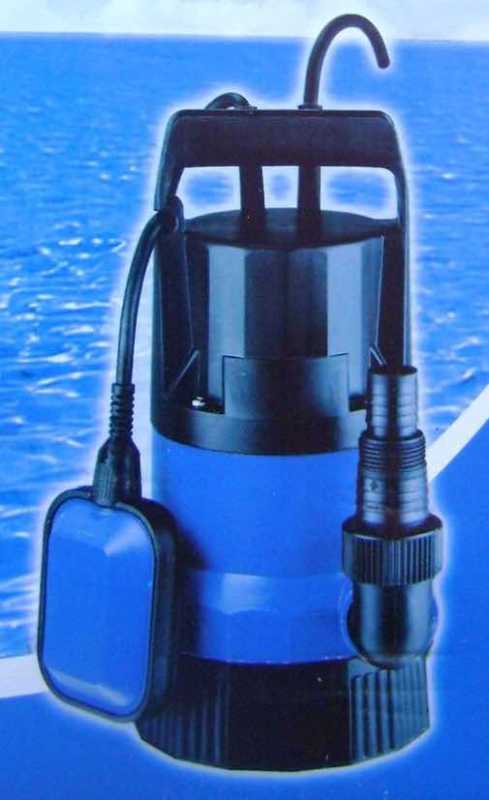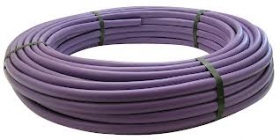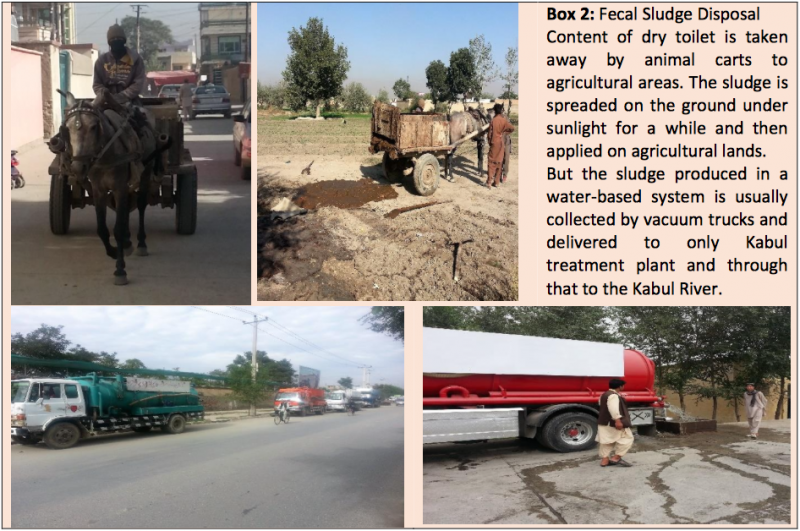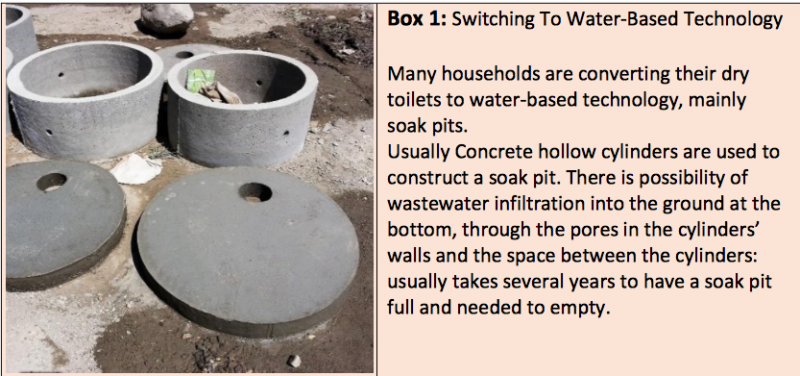- Forum
- categories
- Sanitation systems
- Treatment of wastewater, sludges, organic waste, excreta
- Various other technologies and comparisons of treatment technologies
- Best decentralized treatment solution for a city without a centralized sewage system? (Question about Kabul, Afghanistan)
Best decentralized treatment solution for a city without a centralized sewage system? (Question about Kabul, Afghanistan)
41.2k views
Re: Best decentralized treatment solution for a city without a centralized sewage system? (Question about Kabul, Afghanistan)
The simple vermifilter toilet (Figure 1, page 1) is designed for only blackwater because the soakage field is limited in size (to be easy to construct). For treating greywater and blackwater combined see Figure 3: Passive Vermifilter/Biodigester (page 2) and Figure 2: Aerobic recirculating biodigester (page 1). These systems produce effluent treated to a high level, which can be safely discharged to the soil surface. There is a much larger volume of water involved when you introduce greywater.
Subsurface soakage fields (usually used with septic tanks) are used when the effluent quality is not good enough to discharge to the surface. If properly designed they disperse the effluent and don't contaminate water tables, but where shortcuts are taken in sizing they may concentrate the wastewater and drain into water tables. I suppose the simple vermifilter toilet could be used instead of a septic tank for blackwater and greywater, provided adequate subsurface soakage fields were constructed to accommodate the greywater volume.
Surface discharge via drippers is much cheaper than subsurface soakage fields, so dispersal area can be larger... and the irrigation pipes can even be moved around. Much of the water is evaporated in a dry climate and what soaks into the soil doesn't get down into the water table. Bacteria are also more active in the surface layer of soil and nutrients such as nitrogen, phosphorous and potassium adsorb into the soil and feed the vegetation.
I have provided some further information on design in this topic .
The main issue with surface discharge is that the drippers need to be dosed, either passively (no electricity) or using a pump with float switch.
Dosing syphon
Use the passive system where you have enough slope to drain the wastewater through the system and then disperse the treated effluent without requiring pumps. Keep in mind that with a passive system dosing of the dripper lines is required. Otherwise the water discharges out of only the easiest drippers. Dosing is very easy though.
Active systems that have pumps would be necessary on flat land. The treated effluent gets pumped to the drippers using a pump with a float switch.
$100 submersible pump with float switch
However, there is a risk of overflow if power becomes unavailable or is available intermittently. If this is likely a solar panel, battery and DC pump would be the better option.
Here is a technical paper from Oxfam on construction of a vermidigester toilet.
Please log in or register to see it.
However, in my view you'd be better off just following my design.
There is very little good information available on vermifilters because it is a new technology and those who are commercialising it are protecting their designs and trying to gain commercial advantage... probably because they realise how groundbreaking it is. You really just need to construct a domestic prototype and use local resources to design the local version. It is a very simple system to design and build and I'm happy to help you with design ideas.
cheers
Dean
Vermifilter.com
www.vermifilter.com
Attachments:
-
 Pumpwithfl...itch.jpg
(Filesize: 30KB)
Pumpwithfl...itch.jpg
(Filesize: 30KB)
-
 figure2.gif
(Filesize: 24KB)
figure2.gif
(Filesize: 24KB)
Please Log in to join the conversation.
You need to login to reply- Hussain
-
 Less
Less- Posts: 9
- Likes received: 1
Re: Best decentralized treatment solution for a city without a centralized sewage system? (Question about Kabul, Afghanistan)
Thanks for the feedback & information; appreciate it.
So you suggest treating blackwater and greywater combined, using simple vermifilter toilet. And the effluent better to be used for irrigation purposes but not for direct infiltration into the land (to protect the groundwater?).
Regarding more dispersal than concentrating WW, the good news is that almost whole houses in Kabul’s informal are big enough to disperse their wastewater (shallow wells are bit tricky here). Usually houses are bigger than 300 m2 and most of them have big yards where toilets located. And many of the yards have greenery as well.
@ Do you know any other good materials & links about vermifilter except what you already mentioned?
Thanks & Cheers,
Hussain
PhD Student: HafenCity University, Hamburg (HCU)
Eawag - Swiss Federal Institute of Aquatic Science & Technology
skype: hussain.etemadi
Please Log in to join the conversation.
You need to login to replyRe: Best decentralized treatment solution for a city without a centralized sewage system? (Question about Kabul, Afghanistan)
there will still be those pushing for a series of centralised systems around the city which discharge to waterways... the bigger the plant, the more likely to discharge to waterways. Household level is best, the fewer networks of sewer pipes the better. Communal is okay, provided the sewer network is minimal... There just needs to be unpaved soil to discharge to.
Groundwater pollution can be eliminated with simple vermifilter toilet, provided the drainage field is wider rather than deeper. The key is always dispersal not concentration. I see the simple vermifilter toilet as applicable for households too poor to treat their greywater and who otherwise would build a deep soak pit. The cost is lower than a soak pit and the system does not pollute groundwater. Win win! Add another win, that nobody needs to deal with fecal sludge any more. Also, low flush toilets isolate the user from what goes on underneath and only use 500 ml water. In Africa the handwash water is being used to fill the bowl for the next flush to further conserve water use.
The SaTo pan, a squatting pour flush latrine using 500 ml water per flush.
Turning septic tanks into holding tanks is a negative step. The soakage field is integral with a functional septic tank. You can't have one without the other... certainly no point in having one without the other anyway...
The main problem with septic tanks is that because the leach fields are subsurface, these are expensive to set up properly in order to properly match soil infiltration and discharge volumes.
If proper secondary treatment can be achieved, a new world of surface irrigation opens up. So easy in a dry climate...
On a household scale, vermifiltration offers opportunities for both greywater and blackwater treatment. Either passive (if there is the opportunity to use gravity) or active (e.g. solar panel operated).
Once treated, surface irrigation is easy, provided a pump with floatswitch is available:
Pressure compensating dripperline, 2.1 litre per hour drippers @ 60cm spacings ($1 per metre).
Low pressure effluent distribution (LPED)/dose loading systems can also be used if required to be passive.
cheers
Dean
Vermifilter.com
www.vermifilter.com
Attachments:
-
 dbimage_fi..._300.jpg
(Filesize: 31KB)
dbimage_fi..._300.jpg
(Filesize: 31KB)
-
 capture_1_9.png
(Filesize: 412KB)
capture_1_9.png
(Filesize: 412KB)
Please Log in to join the conversation.
You need to login to reply- Hussain
-
 Less
Less- Posts: 9
- Likes received: 1
Re: Best decentralized treatment solution for a city without a centralized sewage system? (Question about Kabul, Afghanistan)
Topography and mountains divide the city into several zones, and one huge centralized system cannot cover the whole city.
According to the current plan, the only semi-centralized treatment plant will be extended as one of treatment plants in Kabul and its effluent will be discharged into the river; there will be no use for the treated WW near the treatment plant.
-Difficult to say how much concrete (but 50 percent is a good estimation). There are many unpaved roads and neighborhoods, but government and private sector use too much concrete for pavement & construction. This trend has already decreased infiltration capacity and caused flooding.
Humus: dry toilets have been used in Kabul and other cities for a long time and collected night soil have always applied on agricultural lands: So there is no problem to use it. Produced sludge in Kabul WWTP is also sold to the farmers around. The constraints are low demand, rapid urbanization and finally failure of the traditional sanitation system which is not applicable anymore specially for inner-city areas.
Cost of a concrete ring and its lid: around 50 USD. Simple vermi filter is a good idea but still I am thinking of groundwater pollution & required water for flushing. About that produced greywater is much more comparing to blackwater: any potential solution should find a way for greywater management as well. Let’s say if at the end we need to build a communal plant (for example) in a neighborhood to treat the greywater, why not using it for both blackwater and greywater? What if we use Passive Vermifilter/Biodigester (Figure 3 in your last posts) which means high amount of treated used water for infiltration or gardening (where possible)?
Cheers,
Hussain
PhD Student: HafenCity University, Hamburg (HCU)
Eawag - Swiss Federal Institute of Aquatic Science & Technology
skype: hussain.etemadi
Please Log in to join the conversation.
You need to login to replyRe: Best decentralized treatment solution for a city without a centralized sewage system? (Question about Kabul, Afghanistan)
centralised systems discharge to waterways, which in my view is not a sustainable solution. However, once a city gets too built up there is no hope for decentralised systems. To be successful and sustainable there needs to be vegetation to irrigate with treated wastewater, which means available land. Once a city gets too built up there is no land left to revegetate. There is so much concrete in Kabul! How much of the land area is covered in concrete? From the pictures it looks like maybe 50% of the land is not covered by roofs and concrete?
Decentralised systems can be built at lower cost than centralised systems now that the vermifilter is available. However, treating the wastewater is one thing, disposing of it is another. Recycling nutrients back into plant growth is the natural cycle which mankind seems to have broken, with the rationale being one of hygiene. Vegetation supplies valuable products, such as fuelwood, food and even wood chips for the digesters! My interest is in producing wastewater that is safe to use for surface irrigation of useful crops. However, there is a cost to doing this right, for example using discharge pipes with drippers to ensure dispersal and avoid concentration. Surface irrigation is much cheaper than subsurface soakage though.
Thanks for the background to the situation in Kabul, especially your survey. I have copied some gems here:
Greywater
Greywater as an important part of household wastewater is mainly discharged into the drainage channels or street without treatment.
In cultural point of view exposure to greywater is not a major problem and people comparing to black water discharge it freely into drainage. Greywater is a mixture of kitchen, laundry and bath wastewater which makes it difficult to use for irrigation or other purposes. Due to high volume and pollution risk of greywater, any sanitation management plan should consider greywater as well.
Greywater is a mixture of kitchen, laundry and bath wastewater which makes it difficult to use for irrigation or other purposes. Due to high volume and pollution risk of greywater, any sanitation management plan should consider greywater as well.
Blackwater
The material which is used for the construction of a dry (traditional toilet) are bricks, concrete and in old houses mud, but usually all are strong enough and in a good condition in terms of robustness. Dry toilets in most cases are not lined, but constructed above the ground to prevent groundwater pollution. They have a pipe which diverts urine and anal cleansing water to the street while dry feces is collected later for agricultural purposes; containments have a door which opens in the street: when a dry toilet is full the collector has access to it from the street.
I can understand cultural aversion to dealing with fecal sludge, but what about humus (black earth with no smell) that was once feces?most households are not willing to use dry (traditional) toilets. That could be the main reason behind switching to water-based system. According to the Figure 25, they are not interested in composting toilet as well: dealing and exposure to black water and fecal sludge is prohibited culturally and it is also considered a low profile practice.
the percentage of households using water-bases system is increasing; almost all of the water-based systems are flush toilets connected to a soak pit which is getting popular
Households with same family members who use septic and holding tank need to empty their facilities in average around six months too; usually septic and holding tanks don’t have any infiltration into ground.
Usually households cannot afford to have a proper septic tank; they construct flush toilets connected to a soak pit which cost around $200 while a holding tank or a septic tank could cost 10 times more. In terms of operation and maintenance, a soak pit should be emptied each two or three years while a regular septic, holding tank or traditional toilets get emptied more.
usually septic and holding tanks don’t have any infiltration into ground. As discussed earlier households who are using flush toilets are mostly relied on soak pit which is cheaper than septic tanks and more convenient comparing to dry toilets.
One of these concrete rings plus a lid could be used as is for constructing a simple vermifilter toilet. What would these cost in Kabul?
cheers
Dean
Vermifilter.com
www.vermifilter.com
Attachments:
-
 ScreenShot...58am.png
(Filesize: 720KB)
ScreenShot...58am.png
(Filesize: 720KB)
-
 ScreenShot...00am.png
(Filesize: 471KB)
ScreenShot...00am.png
(Filesize: 471KB)
Please Log in to join the conversation.
You need to login to reply- Hussain
-
 Less
Less- Posts: 9
- Likes received: 1
Re: Best decentralized treatment solution for a city without a centralized sewage system? (Question about Kabul, Afghanistan)
You right; soak pits are so deep, and takes long time to fill up…can say in some cases 10 years or even more. But with some modification to protect the groundwater (like introducing vermi-digester toilets) locals would still enjoy flush toilets if they have enough water:
In terms of water the whole city has problem, and I think Kabul should as soon as possible start using surface water surrounding the city and we have enough surface water, although some difficulties to manage it but still providing water to Kabul City should be considered a national project.
Link below is JICA Report. There is a contingency plan for Kabul water supply which I think should be seriously now considered:
http://open_jicareport.jica.go.jp/pdf/12058566_01.pdf
But for the aforementioned site and similar contexts, I think if people want to have water-based toilets, they should forget their shallow wells: most of the shallow wells don’t have water already. There are private companies (government cannot cover the whole Kabul soon and I think private sector should be engaged also) digging deep wells & providing water to the households: government monitoring should be established.
I think avoiding groundwater pollution and also access to enough water are two main factors which should be considered here. Of course any suggested solution should consider different components of environmental sanitation and the whole sanitation chain.
For flushing, If possible people can use even greywater which is now directly discharged into streets or drainage channels.
I am attaching here the household survey report; might be helpful.
@Water-based toilets are mostly pour flush toilets in the yards. In terms of compost worms, I think it is not a big deal: can be produced or already available.
Cheers,
Hussain
PhD Student: HafenCity University, Hamburg (HCU)
Eawag - Swiss Federal Institute of Aquatic Science & Technology
skype: hussain.etemadi
This message has an attachment file.
Please log in or register to see it.
Please Log in to join the conversation.
You need to login to replyRe: Best decentralized treatment solution for a city without a centralized sewage system? (Question about Kabul, Afghanistan)
I assume soak pits are dug deep so that they take longer to fill up? Of course this increases the risk of contaminating the water table, not a good thing when so many rely on groundwater.
Are most toilets out-houses or are flush toilets installed in the house with a wastewater pipe to the soak pit? How much water is used per flush - are the toilets conventional flush? What happens to the greywater from households with deep soak pits?
There is general information on vermidigester toilets on wikipedia and I'm happy to answer any specific questions you have. The key advantage is that the solid waste is reduced to 1/10th of its original volume. In my diagram on page 1 I showed a very shallow soakaway (not deeper than 500mm) to avoid contaminating the water table, and the digester (1m3 capacity) is insulated from extreme cold by soil. The design is suitable for low flush toilets if the toilet is directly above the digester. There are a range of low flush toilets available including squatting. The waste can contain toilet paper but the worms don't mind if it doesn't. The key is that some water must be used in the flush to dilute the urine. A double chamber digester allows for hygenic removal of humus by allowing a rest period for complete decomposition, but this is not necessary. One can expect 5 years service before having to remove humus, it is good to make it easy to do this in your design.
I assume that compost worms are available because Green Organic Agriculture Company is practicing worm composting in Kabul.
cheers
Dean
Vermifilter.com
www.vermifilter.com
Please Log in to join the conversation.
You need to login to reply- Hussain
-
 Less
Less- Posts: 9
- Likes received: 1
Re: Best decentralized treatment solution for a city without a centralized sewage system? (Question about Kabul, Afghanistan)
Very nice discussion going on here….
@ Dear Dean: in reference to your vermi-digester toilet post, I would like to know your idea about using it in some informal areas in Kabul.
Almost 70 percent of the city is informal and the whole city relies on groundwater. Many households use shallow wells, although many wells have no water and those neighborhoods are supplied by private companies & public corporation using deep wells.
In 2015 I had a household survey in two informal neighborhoods in Kabul; both areas were upgraded and their dry vault latrines were improved by the government. By now most of the households shifted to water-based technologies mostly deep soak pit. I had household survey and almost all the households want water-based system.
I wandering if we can offer a proper technology (and sanitation chain) to avoid groundwater pollution & satisfy the locals. Dry toilets still could be suitable for some parts of Kabul, but not in densely areas (270 people per sq. km) which is difficult to close the nutrient loop.
Could you (anybody else engaged in this discussion) provide me more information about vermi-digester toilet (simple or double)? And what do you think about its suitability in Kabul informal areas? Or any other technology proper for this kind of context?
If you need more information, please let me know.
Cheers,
Hussain
PhD Student: HafenCity University, Hamburg (HCU)
Eawag - Swiss Federal Institute of Aquatic Science & Technology
skype: hussain.etemadi
Please Log in to join the conversation.
You need to login to replyRe: Best decentralized treatment solution for a city without a centralized sewage system? (Question about Kabul, Afghanistan)
Unfortunately a paradigm shift is required, which tends to hold up innovation. My favourite quote: "Paradigms fall slowly, from the weight of repeated failure". Vermifiltration offers high levels of treatment and at low cost... win win.
The water resource is in short supply. The wastewater needs to be properly disposed of so it doesn't contaminate the water table, something very easily achieved in such a low rainfall area using surface irrigation, turning a problem into a resource. However, BOD and suspended solids need to be reduced to do this safely. Plant filters are one way. Vermifilters are another.
Jan, CAMUS looks like the Vision Earthcare brand of Soil Biotechnology (SBT) bioreactors that use vermifiltration and plants to purify primary treated wastewater.
Basically a proprietary culture of soil, earthworms, bacteria and special additives. Starts with a septic tank, then to the bioreactor, with rubble in the bottom as drainage layer, then proprietary rock material, special additives and soil as the filter layers. Plants are grown over the top of the SBT beds on soil bunds and wastewater is trickled on top.
There is nothing proprietary about the SBT apart from specific materials that are used, such as minerals and bacterial cultures. Check out their patent,
US Patent No: 6890438 " Process for treatment of organic wastes"
www.google.com/patents/US6890438
Interesting that on their facebook page, the company marketing these CAMUS SBT's, Vision Earthcare, are trying to monopolise their method of vermifiltration with their "patented Soil Bio Technology and Vermifiltration concept." They claim that "Vermifiltration looks like an unauthorized implementation of Soil Bio Technology (SBT) / Constructed Soil Filter (CSF) which has been developed at IIT Bombay by Prof H.S Shankar's group at Chemical Engineering IIT Bombay."
From what I can make out, what they have patented appears to only be very specific, their proprietary bacterial culture and minerals. They use rock powder (novel) and soil media (not novel). They make a special bacterial culture (novel). They use earthworms (not novel) and plants (not novel). They use trademarks and acronyms and proprietary names (novel). Seen it all before.
cheers
Dean
Vermifilter.com
www.vermifilter.com
Please Log in to join the conversation.
You need to login to reply- jankn
-
 Less
Less- Posts: 35
- Karma: 8
- Likes received: 21
Re: Best decentralized treatment solution for a city without a centralized sewage system? (Question about Kabul, Afghanistan)
Nice project, especially the community-based approach. A few quick questions:
The Clearford system presented, how is it different from a normal solid-free sewer system with a septic tank (justifying the trademark)? The document even states that the single-chamber solid retention tank produces "significantly less sludge" than a regular (two-chamber) septic tank - how is that achieved?
What is the CAMUS SBT treatment exactly (a wetland?), and what are those enzymes it needs to run?
The document mentions potential flooding in the monsoon season. How did you solve this with the retention tank - it seems only to rise up to ground level?
Did you reach ODF status in the village in the end?
And finally, how do you see scalability in a dense urban context as Kabul and how would you address the challenges discussed in this thread (cold winter, sludge disposal, GHG emissions, costs, space requirements) especially, when talking about more than individual household/toilet level?
Cheers
/Jan
Doctoral Researcher on environmental performance assessment and modeling of on-site wastewater treatment systems
Trinity College Dublin & University of Limerick
Email: jan.knappe(at)tcd.ie, Twitter: @JanKnappe
Please Log in to join the conversation.
You need to login to replyRe: Best decentralized treatment solution for a city without a centralized sewage system? (Question about Kabul, Afghanistan)
Just out of curiosity, why not consider using a decentralized solution with a centralized network and treatment plant. We have been building these in canada since 1999. here in India our first at a tribal village in Gujarat was commissioned in early 2016 and has been working perfectly since then. From the trail above, I suspect we solve most of the problems identified.
Have a look at our website www.clearford.com and if anyone wants additional information, do have a look at the attached documents - a project writeup and the latest test results. Water supply at the village is 70 LPCD.
Sanjay
This message has attachments files.
Please log in or register to see it.
Please Log in to join the conversation.
You need to login to replyRe: Best decentralized treatment solution for a city without a centralized sewage system? (Question about Kabul, Afghanistan)
thanks for your positive response. I sympathise with the situation in Afghanistan and I'm only too happy to share my ideas and experience in hope of making a difference.
At a domestic scale I have been practicing removal of sludge (sediment) from septic tank to vermifilter. The volume is reduced multiplefold (5 - 10 x) with the result being black humus that has a loamy texture with no smell. This can be handled and spread around as mulch under trees etc. You can use the same vermifilter for recirculation and sludge processing, so a useful reactor. Sludge processing should take about 2 months from addition to decomposition, depending on volume and temperature. A thicker layer will take longer to reduce. Do you have data on sludge production volumes for your units? The vermifilter should be wider if processing sludge and taller if processing wastewater only. This is because with increased surface area the layer of sludge will be thinner and so process faster, whereas with wastewater the retention time (i.e. contact with the media) is more important. Your design would trade these two off and most likely be a similar height as width. Multiple drippers/tricklers would distribute recirculating wastewater evenly over the surface of the media in the reactor.
I am not familiar with your construction materials and methods, so can only offer some design guidelines at this stage.
I'd estimate that conservative vermifilter capacity for recirculation would need to be 100 litres per person. I'd limit sludge addition to no more than 10cm depth of dewatered solids at one time.
The outlet at the bottom of the reactor must be above the inlet of the ABR, and connected to this. Thus if your DEWATS inlet is at ground level, the vermifilter would have to be over-ground.
The reactor does not need to be water sealed because it does not fill with water. There must be adequate ventilation in the reactor but in your case it would also need to be well insulated. Ideally there is an air cavity between the filtration medium and the wall of the reactor, to improve ventilation, along with air vents at the bottom and top. The top needs to be able to be removed to access and remove humus. I'm just not sure what construction materials you have access to but would be interested in providing feedback on your design ideas.
What kind of coarse organic materials are available ion Kabul? I imagine woodchips or tree bark would not be available as inexpensive filtration media?
Would be a remarkable to see decentralised systems transform Kabul by safeguarding groundwater quality, but also greening the city by using the nutrient rich wastewater and humus to grow crops and trees that would not otherwise survive in such a low rainfall environment.
cheers
Dean
Vermifilter.com
www.vermifilter.com
Please Log in to join the conversation.
You need to login to reply- Forum
- categories
- Sanitation systems
- Treatment of wastewater, sludges, organic waste, excreta
- Various other technologies and comparisons of treatment technologies
- Best decentralized treatment solution for a city without a centralized sewage system? (Question about Kabul, Afghanistan)








